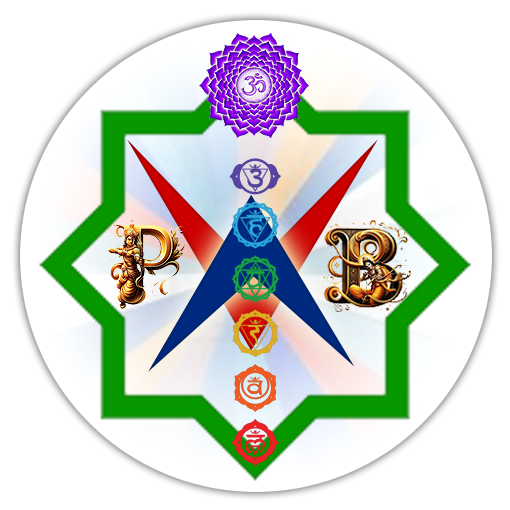కపిల గీత - 315 / Kapila Gita - 315
- Prasad Bharadwaj
- Mar 15, 2024
- 2 min read

🌹. కపిల గీత - 315 / Kapila Gita - 315 🌹
🍀. కపిల దేవహూతి సంవాదం 🍀
✍️. ప్రసాద్ భరధ్వాజ
🌴 7. మానవజన్మను పొందే జీవుని గతిని వర్ణించుట - 46 🌴
46. యథాక్ష్ణోర్ధ్రవ్యాయవ దర్శనా యోగ్యతా యదా|
తదైవ చక్షుసో ద్రష్టుర్ద్రష్టృత్వా యోగ్యతానయోః॥
తాత్పర్యము : నేత్రములతో వ్యాధి (కామెర్లు మొదలగు రోగముల) కారణముగా వస్తువులయొక్క రూపములను చూచెడి యోగ్యత నశించినప్పుడు నేత్రేంద్రియములకు గూడ చూచెడి యోగ్యత యుండదు. నేత్రములు, నేత్రేంద్రియములు రెండునూ వస్తువులను చూచుటకు అసమర్థమైనచో, ఆ రెండింటికిని సాక్షియైన జీవుని యందు గూడ ఆ యోగ్యత ఉండదు. జీవుని యొక్క జననమరణములు గూడ ఇట్టి ఉపాధి ధర్మములు మాత్రమే.
వ్యాఖ్య : 'నేను చూస్తున్నాను' అని ఒకరు చెప్పినప్పుడు, అతను తన కళ్లతో లేదా కళ్లద్దాలతో చూస్తాడని అర్థం; అతను దృష్టి సాధనంతో చూస్తాడు. దృష్టి సాధనం విరిగి పోయినట్లయితే లేదా వ్యాధిగ్రస్తులైతే లేదా నటనకు అసమర్థంగా మారినట్లయితే, అతను, చూసేవాడుగా కూడా నటించడం మానేస్తాడు. అదేవిధంగా, ఈ భౌతిక శరీరంలో, ప్రస్తుత క్షణంలో జీవాత్మ నటిస్తోంది మరియు భౌతిక శరీరం, దాని పని చేయలేక పోవడం వల్ల, ఆగిపోయినప్పుడు, అతను తన ప్రతిచర్య కార్యకలాపాలను నిర్వహించడం కూడా మానేస్తాడు. ఒకరి చర్య యొక్క సాధనం విచ్ఛిన్నమై పనిచేయ లేనప్పుడు, దానిని మరణం అంటారు. మళ్ళీ, ఒక వ్యక్తి చర్య కోసం కొత్త సాధనాన్ని పొందినప్పుడు, దానిని జన్మ అంటారు. ఈ జనన మరణ ప్రక్రియ ప్రతి క్షణం, నిరంతరం శారీరక మార్పు ద్వారా జరుగుతూనే ఉంటుంది. చివరి మార్పును మరణం అని పిలుస్తారు మరియు కొత్త శరీరాన్ని అంగీకరించడం పుట్టుక అని పిలుస్తారు. అది జనన మరణ ప్రశ్నకు పరిష్కారం. వాస్తవానికి, జీవికి పుట్టుక లేదా మరణం లేదు, భగవద్గీతలో ధృవీకరించ బడినట్లుగా, న హన్యతే హన్యానే శరీరే: (భగవద్గీత 2-20) ఈ భౌతిక శరీరం యొక్క మరణం లేదా వినాశనం తర్వాత కూడా జీవుడు ఎన్నటికీ మరణించడు. జీవుడు శాశ్వతమైన వాడు.
సశేషం..
🌹 🌹 🌹 🌹 🌹
🌹 Kapila Gita - 315 🌹
🍀 Conversation of Kapila and Devahuti 🍀
📚 Prasad Bharadwaj
🌴 7. Lord Kapila's Instructions on the Movements of the Living Entities - 46 🌴
46. yathākṣṇor dravyāvayava- darśanā yogyatā yadā
tadaiva cakṣuṣo draṣṭur draṣṭṛtvā yogyatānayoḥ
MEANING : When the eyes lose their power to see color or form due to morbid affliction of the optic nerve, the sense of sight becomes deadened. The living entity, who is the seer of both the eyes and the sight, loses his power of vision. The births and deaths of a living being are bodily dharmas only.
PURPORT : When one says, "I see," this means that he sees with his eyes or with his spectacles; he sees with the instrument of sight. If the instrument of sight is broken or becomes diseased or incapable of acting, then he, as the seer, also ceases to act. Similarly, in this material body, at the present moment the living soul is acting, and when the material body, due to its incapability to function, ceases, he also ceases to perform his reactionary activities. When one's instrument of action is broken and cannot function, that is called death. Again, when one gets a new instrument for action, that is called birth. This process of birth and death is going on at every moment, by constant bodily change. The final change is called death, and acceptance of a new body is called birth. That is the solution to the question of birth and death. Actually, the living entity has neither birth nor death, but is eternal. As confirmed in Bhagavad-gītā, na hanyate hanyamāne śarīre: (BG 2.20) the living entity never dies, even after the death or annihilation of this material body.
Continues...
🌹 🌹 🌹 🌹 🌹




Comments